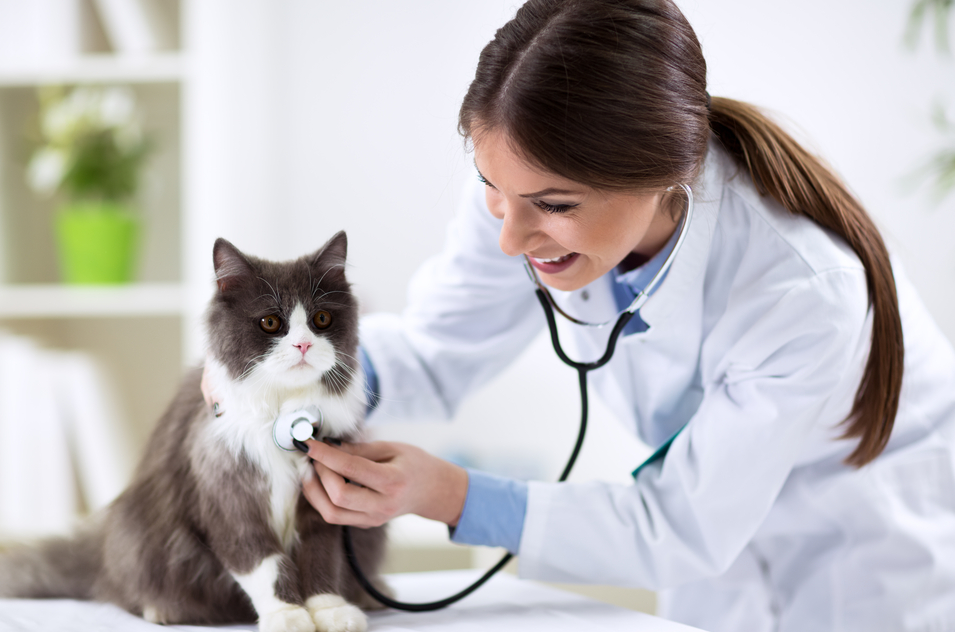Finding your favorite sweater soaked in feline urine is enough to make any cat owner sigh. But before you despair, understand that cats peeing outside the litter box is surprisingly common, and clothes often become unfortunate targets. While it’s a frustrating behavior, it’s crucial to remember that it’s rarely your cat’s fault. They’re simply communicating distress through the only means they know how.
Why Is My Cat Peeing on My Clothes?
Unraveling the mystery behind your cat’s behavior is the first step towards a solution. Here are some common reasons why your furry friend might be mistaking your wardrobe for a restroom:
Medical Issues
- Urinary tract infections (UTIs): UTIs cause burning and discomfort during urination, leading cats to seek alternative, softer surfaces like clothes for relief.
- Bladder stones: These painful mineral deposits can make urination difficult, prompting cats to seek easier elimination spots.
- Diabetes: Increased thirst and urination are classic signs of diabetes, and cats might go outside the box if overwhelmed.
- Kidney disease: In advanced stages, kidney disease can cause changes in litter box habits.

Litter Box Discomfort
- Dirty litter box: Cats are fastidious creatures, and a smelly, unclean litter box is a major turn-off. Scoop daily, and consider having multiple boxes.
- Unpleasant litter type: Some cats dislike specific litter textures or scents. Experiment with different options to find their preference.
- Wrong location: The litter box might be in a high-traffic area, noisy spot, or near other pets, making cats feel unsafe or stressed. Ensure it’s in a quiet, private location.
- Not enough boxes: The general rule is one box per cat, plus an extra. For multi-cat households, this ensures there are no competition or territorial issues surrounding the litter box.
Stress and Anxiety
- New pet or baby: Changes in the household dynamic can trigger stress and anxiety in cats, leading to inappropriate elimination. Provide hiding spots, vertical spaces, and Feliway diffusers to promote calmness.
- Moving or renovations: Disruptions in their familiar environment can cause stress, and clothes might become targets due to their scent or texture.
- Loud noises or visitors: Cats are sensitive to loud noises and unfamiliar people. Create a designated safe space for them to retreat during stressful times.
Territorial Marking
- Unneutered/unspayed cats: Intact cats often spray urine to mark their territory. Spaying/neutering significantly reduces this behavior.
- New cat in the house: If you recently introduced a new feline friend, your existing cat might feel threatened and mark its territory, including clothes, to reassert dominance.

Reclaiming Your Clothes and Your Cat’s Happiness
Remember, punishment never solves the problem and can worsen your cat’s anxiety. Instead, focus on addressing the underlying cause and creating a positive, stress-free environment. Here’s a game plan:
Rule Out Medical Issues: Schedule a veterinary checkup to rule out any underlying medical conditions that might be causing the inappropriate elimination.
Optimize the Litter Box
- Cleanliness: Scoop daily and completely change the litter every week.
- Location: Find a quiet, private, easily accessible location away from food and water bowls.
- Number of Boxes: Follow the one-box-per-cat-plus-one rule.
- Litter Type: Experiment with different textures and scents to find what your cat prefers. Consider unscented, clumping clay litter.
- Box Size: Ensure the box is large enough for your cat to turn around comfortably.
Reduce Stress and Anxiety
- Provide enrichment: Engage your cat with interactive toys, scratching posts, and climbing structures to release energy and combat boredom.
- Create a safe space: Offer cozy hideaways like cat trees, cardboard boxes, or covered beds where they can feel secure.
- Feliway Diffusers: These plug-in diffusers release calming pheromones that can reduce stress and anxiety in cats.
- Address new additions gradually: Introduce new pets or people slowly, allowing your cat time to adjust and feel comfortable.
Deterrent Measures (While Addressing the Cause)
- Temporarily limit access: While investigating the cause, restrict your cat’s access to areas where they’ve urinated on clothes. Use baby gates, closed doors, or designated playtime areas to keep them away from vulnerable items.
- Thorough Cleaning: Clean soiled clothes and areas thoroughly with an enzymatic cleaner specifically designed to remove pet urine odors. Regular cleaning eliminates lingering smells that might attract your cat back to the same spot.
- Double-check accessibility: Ensure litter boxes are easily accessible at all times. If your cat uses stairs or has mobility issues, consider placing a box on each level of your home.

When to Seek Professional Guidance
If you’ve implemented these steps diligently and your cat continues to pee on your clothes, don’t hesitate to seek professional help. Consult a certified animal behaviorist or veterinarian specializing in feline behavior. They can conduct a thorough assessment, provide personalized strategies, and rule out any complex behavioral issues.
Conclusion
Solving inappropriate elimination takes time, patience, and a positive approach. Focus on understanding your cat’s needs and creating a comfortable, stress-free environment. With dedication and the right approach, you can reclaim your wardrobe and restore harmony with your furry friend.
Resources & References
- https://vcahospitals.com/know-your-pet/cat-behavior-problems-marking-and-spraying-behavior
- https://resources.bestfriends.org/article/how-do-i-help-my-cat-whos-afraid-noises
- https://doobert.com/kidney-disease-in-cats-and-dogs-navigating-and-managing-a-common-health-issue/
- https://www.petmd.com/cat/conditions/endocrine/c_ct_diabetes_mellitus
FAQs About Cats Peeing on Clothes
Should I punish my cat for peeing on my clothes?
Not! Punishment will only worsen the situation, causing stress and anxiety that can exacerbate the problem. Punishment doesn’t address the underlying cause, which is crucial for a lasting solution.
How long does it take to stop my cat from peeing on clothes?
Unfortunately, there’s no one-size-fits-all answer. The timeframe depends on the root cause. If it’s a medical issue, addressing that with your veterinarian should resolve it quickly. For behavioral reasons, it takes patience and consistent implementation of the recommended strategies. Be prepared for a few weeks or even months, depending on the severity of the issue.
I’ve tried everything, but my cat still pees on my clothes! What do I do?
Don’t give up! Seek professional help. Consult a certified animal behaviorist or veterinarian specializing in feline behavior. They can assess your cat, provide personalized strategies, and rule out any complex behavioral issues.
Can certain scents deter my cat from peeing on clothes?
While some strong scents like citrus or vinegar are often recommended, their effectiveness is mixed and can even backfire. Cats have sensitive noses, and harsh smells might cause more stress and make the problem worse. Focus on addressing the underlying cause and avoid using deterrents as the main solution.
Is there a specific type of litter that can help?
Experimenting with different litter types is crucial. Some cats dislike scented litters, while others prefer specific textures. Unscented, clumping clay litter is often a good starting point. Consider offering a variety of options to see what your cat gravitates towards.
What if my cat pees on clothes after a new pet or baby arrives?
Introducing new additions slowly is key. Create a safe space for your existing cat, provide hiding spots, and use Feliway diffusers to promote calmness. Gradually introduce the new pet or baby, allowing your cat ample time to adjust and feel comfortable. Remember, patience and understanding are essential during this transition period.


![Putting Cat in Carrier as Punishment [Cat Behavior Tips]](https://petsybox.com/wp-content/uploads/2023/09/Putting-Cat-in-Carrier-as-Punishment-Featured-Images-768x432.webp)




